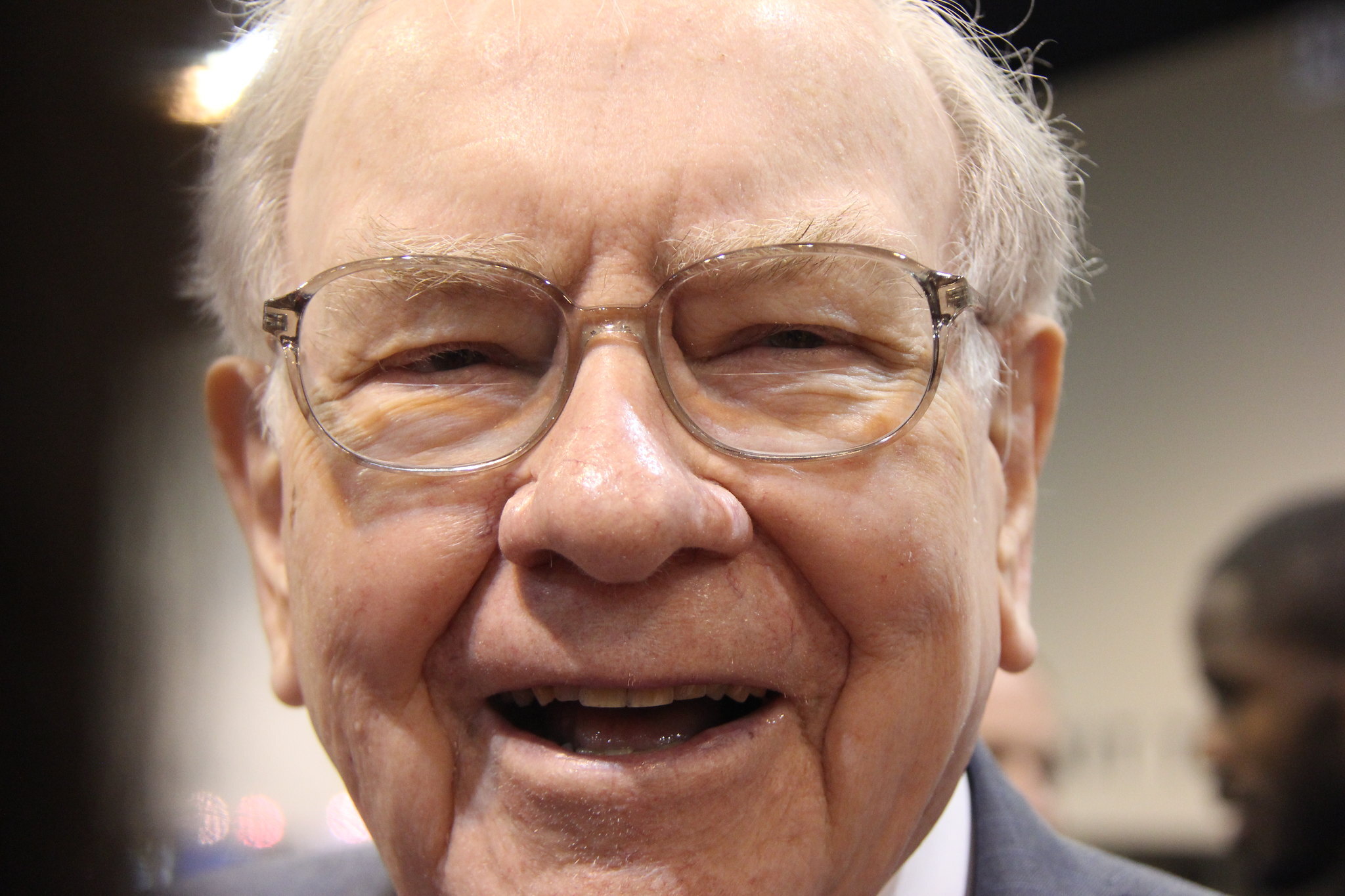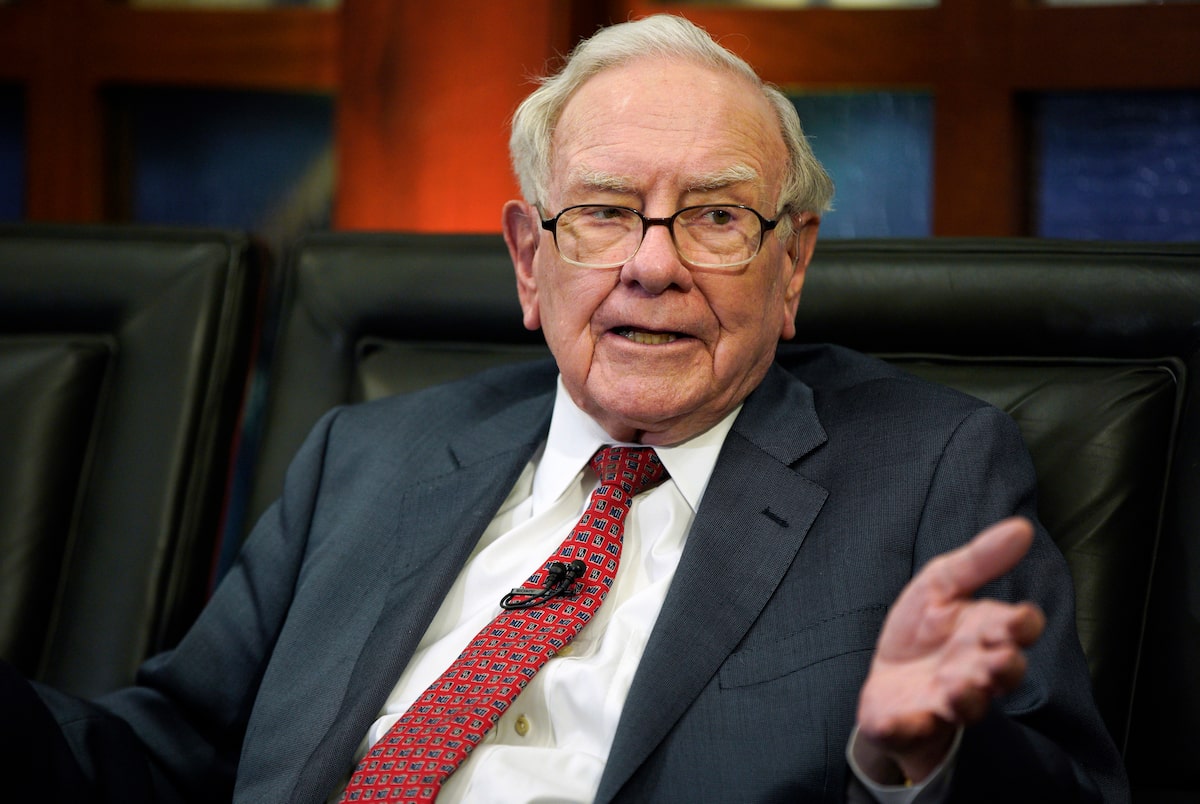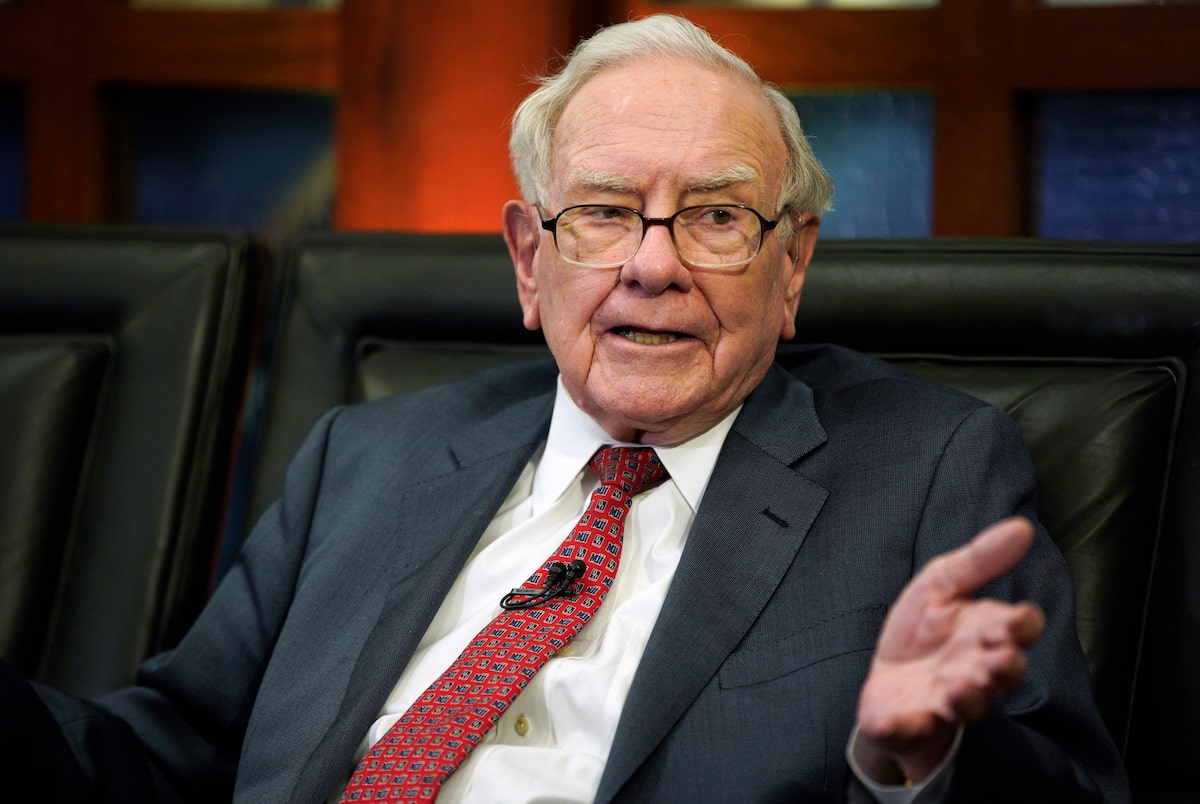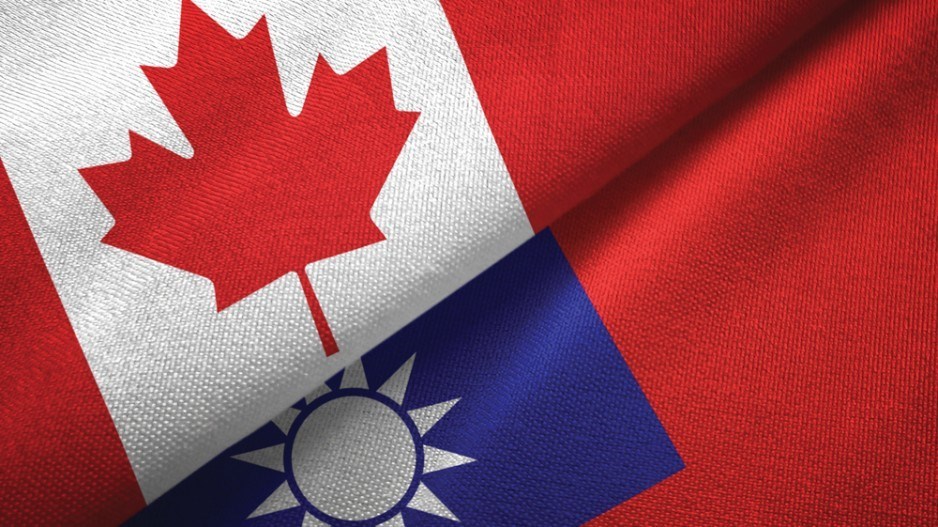Investment
Berkshire Hathaway Trims Its Apple Investment and Has $189 Billion in Cash – The Motley Fool

[ad_1]

The conglomerate just reported its first-quarter results, so here’s a rundown of the key figures.
Berkshire Hathaway (BRK.A -0.56%) (BRK.B 0.07%) reported first-quarter results on Saturday, and there’s quite a bit to unpack. In addition to the headline revenue and earnings numbers, investors always watch Berkshire’s cash stockpile, buyback activity, and the operating income from its subsidiary businesses.
With that in mind, here’s a rundown of the key numbers, a major investment move that was revealed, and the important information we don’t know yet.
The headline numbers (which don’t mean much)
Warren Buffett himself has cautioned investors not to pay too much attention to the company’s net income (earnings per share, or EPS), as it includes unrealized investment gains and losses from Berkshire’s massive stock portfolio. That’s especially true for the first quarter, as an excellent first quarter of 2023 resulted in an EPS decline of 64% — even though Berkshire’s business performed quite well, as we’ll see in the next section.
Berkshire’s revenue grew by 5%, and it’s worth noting that both the top and bottom-line numbers came in significantly higher than analysts had been expecting.
Operating earnings paint a better picture
Berkshire’s operating earnings tell us how the company’s subsidiary businesses are performing, and these look great. Overall, Berkshire’s operating earnings grew by 39% year over year.
Much of this strong performance was due to the insurance business. Underwriting income nearly tripled year over year, and investment income grew by 32%, mainly due to the rising interest rate environment over the past year. Berkshire Hathaway Energy operating earnings rose by 72% year over year. The only significant decline was an 8% year-over-year drop in BNSF Railroad’s operating earnings, but the rest of Berkshire’s business more than made up for it.
Is Buffett souring on Apple?
One of the most important things investors should know about Berkshire Hathaway’s quarterly reports is what isn’t revealed.
Specifically, while Berkshire reports the cost basis of its massive stock portfolio from quarter to quarter, we generally don’t know what stocks Berkshire bought or sold (with few exceptions) until its 13-F is filed with the Securities and Exchange Commission. This quarter’s filing is due on May 15, so we’ll get an updated snapshot of Berkshire’s portfolio as it stood on March 31.
However, Berkshire reports the market value of its largest stock positions as of the end of the quarter. Judging by these, it appears that Berkshire unloaded about 13% of its massive investment in Apple (AAPL 5.98%) during the first quarter. This would certainly explain the rapid growth in the cash stockpile, as well as the realized investment gains of $11.2 billion Berkshire mentioned in its earnings release.
Buybacks accelerated in the first quarter
Berkshire’s buyback activity is always of interest to shareholders, as it provides insight into whether Buffett thinks the company’s stock is attractive. While a price below intrinsic value is a requirement for buybacks to take place at all, the pace of buybacks has varied widely over the past few years.
The first-quarter earnings report shows that Berkshire spent $2.6 billion on buybacks, including both Class A and Class B shares.
For context, Berkshire repurchased $2.2 billion of its shares in the fourth quarter of 2023 and spent $9.2 billion throughout the entirety of last year. So, the first quarter represents a bit of an acceleration.
Berkshire’s cash hoard hits a new record
At the end of 2023, Berkshire’s cash stockpile soared to an all-time high of $167.6 billion. Simply put, Buffett has found it difficult to identify attractive acquisition opportunities in recent years, and with short-term Treasuries yielding about 5% on Berkshire’s idle cash, Buffett is in no rush to pull the trigger.
To say that Berkshire’s cash hoard grew in the first quarter would be an understatement. Including cash, equivalents, and short-term Treasury Bills, Berkshire now has a staggering $189 billion on its balance sheet.
Finally, the earnings report was released on the morning of Berkshire’s widely followed annual shareholders meeting in Omaha, Nebraska. The meeting includes hours of Q&A with Warren Buffett and the heads of Berkshire’s insurance and non-insurance operations, so there’s likely to be some new information (and investment wisdom) shared throughout the day. We may even find out why Buffett sold a significant amount of Apple. We’ll be sure to keep you informed!
Matt Frankel has positions in Berkshire Hathaway. The Motley Fool has positions in and recommends Apple and Berkshire Hathaway. The Motley Fool has a disclosure policy.
[ad_2]
Source link
Investment
Warren Buffett’s Berkshire Hathaway mulls major new investment in Canada

[ad_1]

Berkshire Hathaway Chairman and CEO Warren Buffett speaks during an interview with Liz Claman on Fox Business Network’s Countdown to the Closing Bell, on May 7, 2018, in Omaha, Neb.Nati Harnik/The Associated Press
Warren Buffett’s Berkshire Hathaway Inc. BRK-A-N has set its sights on making a major new investment in Canada.
The U.S. conglomerate holding company, whose top shareholder is the 93-year-old billionaire, held its annual meeting on Saturday, live-streamed from a packed arena in Omaha, Neb.
Greg Abel, who is vice-chair of Hathaway’s non-insurance operations, is a Canadian who is widely seen to be Mr. Buffett’s successor in the executive suite and eventually become the company’s chair.
Members of Berkshire’s leadership team are now mulling options for a new foray into Canada.
“When we see anything that’s suggesting an idea that’s of a size with interest here and meets other requirements, they don’t have any hesitancy about putting big money in Canada,” Mr. Buffett said during the meeting. “There are things we actually can do fairly well, where Canada could benefit from Berkshire’s participation.”
The Oracle of Omaha heaped praise on Canada. “We do not feel uncomfortable in any way, shape or form, putting our money into Canada,” Mr. Buffett said.
“We don’t have any mental blocks about that country. And of course, there’s a lot of countries we don’t understand at all. So Canada, it’s terrific when you’ve got a major economy – not the size of the U.S., but a major economy that you absolutely, you feel confident about operating there.”
Mr. Abel also serves as chair of Berkshire Hathaway Energy, which includes existing Canadian assets.
Assets north of the border include Calgary-based Berkshire Hathaway Energy Canada, which operates 13,000 kilometres of transmission lines and 300 substations in Alberta through AltaLink.
“It goes across many of our operating entities and then, as Warren touched on, all the businesses that we have a piece of that we’re invested in are up in Canada. So the presence is significant,” Mr. Abel said during the meeting. “We’re always looking at making incremental investments there because it’s an environment we’re very comfortable with.”
Mr. Abel recently received the Canadian Business Leader Award in Edmonton from the University of Alberta, where he graduated with a bachelor of commerce in 1984. At the university, he had plans to major in finance but later switched to accounting.
While it has been four decades since he graduated from the Edmonton university, he still visits friends and family regularly in Alberta, and he continues to monitor the Canadian economy.
“I would say the economy moves very closely to the U.S. So the results we’re seeing out of our various businesses that report both the U.S. and Canadian operations aren’t drastically different,” Mr. Abel said. “On the energy side, for example, we make very substantial investments up there in Alberta. But again, it’s very consistent with how that economy is growing.”
He is the nephew of the late Sid Abel, a hockey Hall of Famer who played for the Detroit Red Wings.
[ad_2]
Investment
Canada-Taiwan investment agreement to boost economic ties – North Shore News

[ad_1]

Last year’s signing of the Foreign Investment Promotion and Protection Agreement (FIPA) is expected to bring Canada and Taiwan closer in economic partnerships, according to experts.
“FIPA is a landmark agreement between Taiwan and Canada,” said Angel Liu, director general of the Taipei Economic and Cultural Office in Vancouver.
“There are some bureaucracies, thresholds or some labour or environmental standards [issues] that, through FIPA, we can facilitate.”
She was among a host of officials and experts from Taiwan speaking late last month at a World Trade Centre Vancouver event. The conference zeroed in on business opportunities in Taiwan and how Canadian companies can capitalize on investment opportunities there following the signing of FIPA this past December.
FIPA helps provide more relaxed investment procedures for businesses making investments in each other’s territory by streamlining the process or foreign regulations and reducing some burdens on the licensing or reviewing process, according to Liu.
The Taiwan government hopes that FIPA will help attract more investments from Canada and deliver the image of Taiwan as a welcoming market for foreign investors, she added.
“It is just the beginning because it takes time for both sides to digest and to get to know each other more.”
There is “huge space” for growth in trade volume and business partnerships between Canada and Taiwan, especially at a time when both countries are looking to reduce their economic reliance on China, according to Huai-Shing Yen, deputy executive director of the Chung-Hua Institution for Economic Research.
Taiwan was Canada’s 12th-largest trade partner in 2022. Canada’s exports to Taiwan accounted for less than 0.5 per cent of its total exports and Canada’s imports from Taiwan accounted for one per cent.
“This suggests that Taiwan is not yet considered as a main supply source for Canada and the same situation applies the other way around,” said Yen.
She said the bilateral investment between both countries is also “lower than ideal” as Canada accounted for 0.1 per cent of the foreign investment in Taiwan over the past 10 years. And some areas have significant potential for growing trade and partnerships between Taiwan and B.C.
“The first potential is for agricultural products. And the second potential I would say is about the critical mineral supply, because Taiwan has a growing demand of some critical raw materials on which we want to diversify our import suppliers,” she said.
There are about 30 critical raw materials that Taiwan is highly dependent on China, and Canada has great potential to become Taiwan’s new partner in mineral supply, she added.
Information and Communications Technology (ICT) is another sector Taiwan companies are looking to relocate their investment to countries other than China.
“I understand that Canada wants to develop a strong ICT industry and it’s also an important area B.C. would like to further develop. … We can provide the ICT products and also can be your new source of ICT investments in B.C. as well as in Canada,” said Yen.
Liu said FIPA is a great step further but she also hopes the Canadian government seriously considers Taiwan’s application to join the Comprehensive and Progressive Agreement for Trans-Pacific Partnership (CPTPP) to unlock more trade and investment opportunities between the two countries.
“[We] encourage CPTPP members, including Canada, to start informal discussion and negotiations with Taiwan, so we can at least start the negotiation informally.”
[ad_2]
Source link
Investment
Avoid These 2 Stocks in 2024, But Consider Investing in This 1 Instead!

|
|
[ad_1]

Utility stocks are supposed to be safety nets or defensive assets, but not when interest rates are sky-high. Thus far, the sector is one of three worst performers in 2024. TransAlta (TSX: TA) and Boralex (TSX:BLX), in particular, own renewable energy assets and pay decent dividends yet continue to underperform.
Avoid both dividend stocks and instead consider investing in Secure Energy Services (TSX:SES) in the industrial sector, the third best performing sector. In addition to the market-beating return (+22.1%), the yield is more attractive, and the payout is safe.
Evolving markets
TransAlta’s earnings attributable to shareholders in Q1 2024 beat expectations, although it declined 24.5% to $222 million compared to Q1 2023. Furthermore, free cash flow (FCF) and cash flow from operating activities fell 21.7% and 47.2% year over year respectively to $206 million and $244 million.
The $3 billion company operates electrical power generation assets in Canada, the United States, and Australia. It provides clean and reliable power to municipalities, medium and large industries, businesses, and utility customers. TransAlta is one of Canada’s largest wind power producers and Alberta’s largest hydroelectric power producer.
Since green development is on hold in Alberta, management will focus on other core jurisdictions, such as the U.S. and Western Australia, to secure risk-adjusted returns within stable markets. At $9.84 per share (-10.1% year to date), the dividend offer is 2.44%.
Robust pipeline
As of this writing, Boralex investors are down 10.7% year to date but partake in the 2.21% dividend. The share price of $29.92 is higher than TransAlta and Secure Energy Services. This $3.1 billion power company develops wind, solar, and hydroelectric energy production facilities and owns energy storage sites in Canada, France, the U.K., and the U.S.
In 2023, net earnings soared 1,337.5% to $115 million versus 2022 due to strong wind farm performance and asset commissioning in France. Discretionary cash flows increased 7.2% year over year to a record $179 million. Still, the record results don’t show on the stock’s performance. The trailing one-year price return is -22.3%.
Patrick Decostre, President and CEO of Boralex, said two major projects are ongoing, with commissioning in Q4 2024. Two secured-stage projects are progressing according to plan. The company submitted bids (solar and storage) in New York. “We can successfully complete these various projects, which are spread over the next several years,” he said.
Strong industry fundamentals
Secure is in ann environmental and energy infrastructure business that operates in the waste management industry. The network of this $3 billion company extends throughout Western Canada and North Dakota. 2024 could be a banner year, given the impressive first-quarter results.
In the three months ended March 31, 2024, revenue declined 13% year over year to $360 million, while net income climbed 667.3% to $422 million compared to Q1 2023. Secure sold 29 facilities to Waste Connections for $1.2 billion on orders by the Competition Tribunal.
Management said Secure is extremely well positioned for success due to strong industry fundamentals and growth opportunities. The expanded Trans Mountain pipeline will soon begin operations. Furthermore, the waste processing facilities currently only operate at about 60%.
More than secure
Secure Energy is a winning investment, evidenced by the 188% return in 3 years. At $11.41 per share, the 3.51% dividend yield is safe owing to the low 20.6% payout ratio.
[ad_2]






